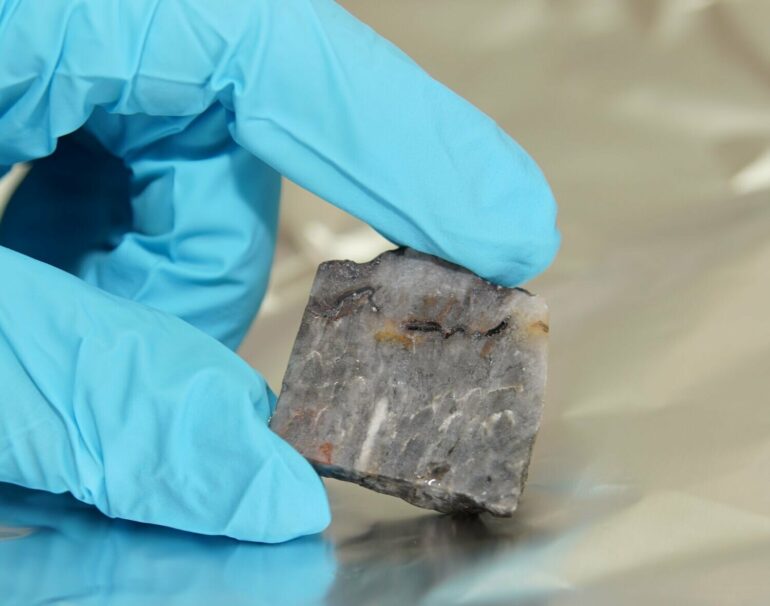To learn about the first organisms on our planet, researchers have to analyze the rocks of the early Earth. These can only be found in a few places on the surface of Earth. The Pilbara Craton in Western Australia is one of these rare sites; there are rocks there that are around 3.5 billion years old containing traces of the microorganisms that lived at that time.
A research team led by the University of Göttingen has now found new clues about the formation and composition of this ancient biomass, providing insights into the earliest ecosystems on Earth. The results are published in the journal Precambrian Research.
Using high-resolution techniques such as nuclear magnetic resonance spectroscopy (NMR) and near-edge X-ray Absorption Fine Structure (NEXAFS), the researchers analyzed carbonaceous particles found in rocks made of barium sulfate. This enabled scientists to obtain important information about the structure of microscopically small particles and show that they are of biological origin. It is likely that the particles were deposited as sediment in the body of water of a “caldera”—a large cauldron-shaped hollow that forms after volcanic activity.
In addition, some of the particles must have been transported and changed by hydrothermal waters just beneath the surface of the volcano. This indicates a turbulent history of sediment deposits. By analyzing various carbon isotopes, the researchers concluded that different types of microorganisms were already living in the vicinity of the volcanic activity, similar to those found today at Icelandic geysers or at hot springs in Yellowstone National Park.
The study not only sheds light on the Earth’s past, but is also interesting from a methodological point of view. First author Lena Weimann, Göttingen University’s Geosciences Centre, explains, “It was very exciting to be able to combine a range of high-resolution techniques, which enabled us to derive information about the history of how the organic particles were deposited and their origin. As our findings show, original traces of the first organisms can still be found even from extremely old material.”
More information:
L. Weimann et al, Carbonaceous matter in ∼ 3.5 Ga black bedded barite from the Dresser Formation (Pilbara Craton, Western Australia)—Insights into organic cycling on the juvenile Earth, Precambrian Research (2024). DOI: 10.1016/j.precamres.2024.107321
Provided by
University of Göttingen
Citation:
High resolution techniques reveal clues in 3.5 billion-year-old biomass (2024, February 21)



